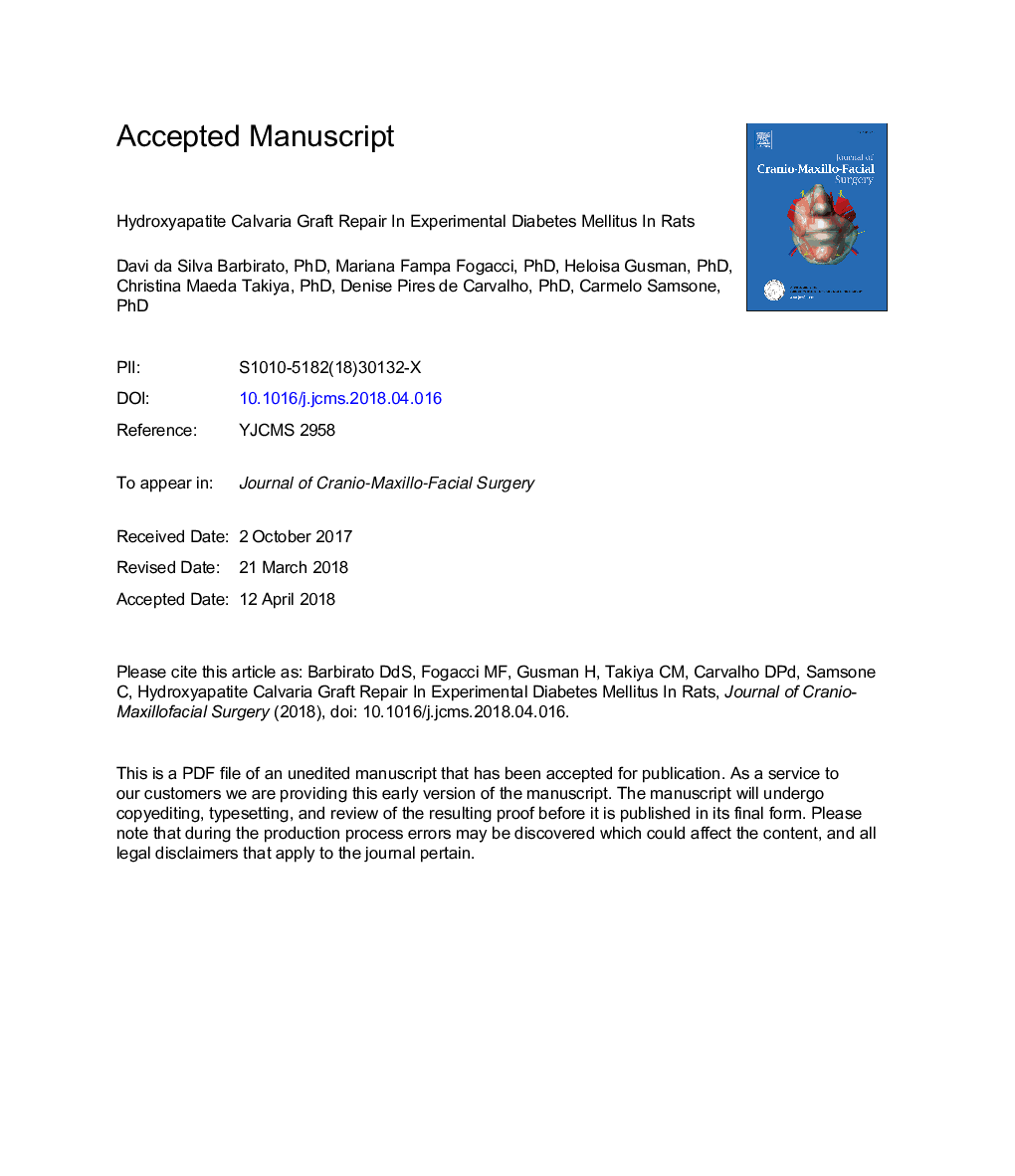| کد مقاله | کد نشریه | سال انتشار | مقاله انگلیسی | نسخه تمام متن |
|---|---|---|---|---|
| 8963595 | 1646622 | 2018 | 45 صفحه PDF | دانلود رایگان |
عنوان انگلیسی مقاله ISI
Hydroxyapatite calvaria graft repair in experimental diabetes mellitus in rats
ترجمه فارسی عنوان
ترمیم گاو هیدروکسی آپاتیت در دیابتی های آزمایش شده در موش صحرایی
دانلود مقاله + سفارش ترجمه
دانلود مقاله ISI انگلیسی
رایگان برای ایرانیان
کلمات کلیدی
دیابت هیدروکسی آپاتیت، پیوند تعمیر استخوان، کلارا، موش
موضوعات مرتبط
علوم پزشکی و سلامت
پزشکی و دندانپزشکی
دندانپزشکی، جراحی دهان و پزشکی
چکیده انگلیسی
Among the systemic conditions that impact negatively on the planning and execution of surgical procedures, diabetes mellitus (DM) is the primary clinical condition responsible for complications. This study investigated bone formation in critical defects surgically filled with hydroxyapatite (HA) in diabetic rats. A descriptive, randomized sample and blinded analysis were conducted to test bone regeneration in critical bone defects surgically performed in rat calvaria. Twenty adult male Wistar rats were randomly divided into two groups: control, normoglycemic animals (CG); and test, streptozotocin-induced hyperglycemic animals (TG). A circular bone defect was filled with HA and maintained subperiosteally. The clinical parameters evaluated were body weight, water and food intake, fasting blood glucose, and bone alkaline phosphatase. Bone-grafted area samples were submitted for histomorphometric and stereological analysis. The TG showed a significantly higher rate of new bone formation compared with the CG, sacrificed 15 days after surgery (p < 0.0001). However, at the end of the study, there was no significant difference in the amount of bone formed between groups (p = 0.077). In parallel, with the increase in osteoblastic activity observed in the TG by the measurement of systemic bone alkaline phosphatase (p = 0.016), the analysis of polarized microscopy and stereology demonstrated a lower level collagen maturation and mineralization in the TG. Quantitatively, the TG showed significantly better results for bone gain in the first 15 days. Qualitative assessments, however, showed fewer collagen fibers and bone maturation in the TG compared with the CG both at 15 and 45 days. Therefore, the postoperative evaluation of bone grafts with HA in hyperglycemic situations should consider the systemic and local effects of this condition on the quality of bone repair, rather than identifying the filling or stability of the grafted area after the process. We conclude that clinically detectable bone repair in diabetic animal models submitted to hydroxyapatite grafts may be satisfactory in the early stages. However, hyperglycemia compromises the quality of the newly formed bone and the collagen cross-linking involved in this process.
ناشر
Database: Elsevier - ScienceDirect (ساینس دایرکت)
Journal: Journal of Cranio-Maxillofacial Surgery - Volume 46, Issue 9, September 2018, Pages 1576-1585
Journal: Journal of Cranio-Maxillofacial Surgery - Volume 46, Issue 9, September 2018, Pages 1576-1585
نویسندگان
Davi da Silva Barbirato, Mariana Fampa Fogacci, Heloisa Gusman, Christina Maeda Takiya, Denise Pires de Carvalho, Carmelo Samsone,
